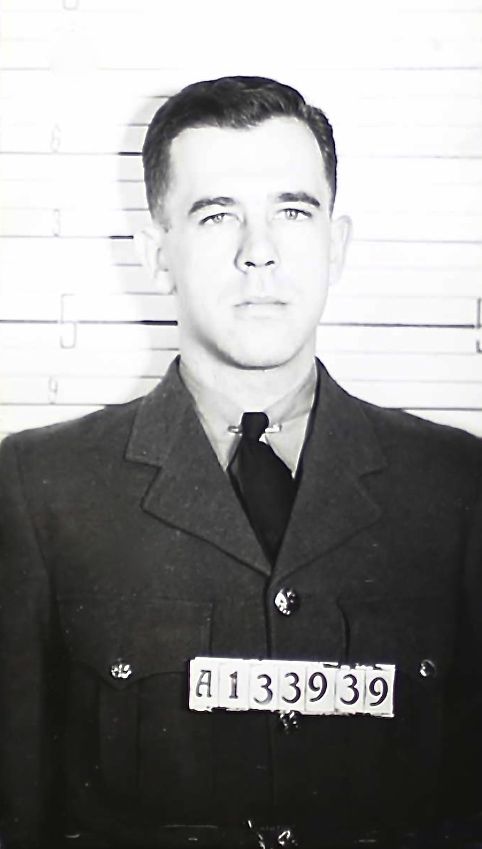Frank Paul Byrne was born on January 7, 1920, in Phoenixville, Chester County, Pennsylvania, to Joseph and Marie Byrne. He was the fourth of seven children: Marie Josephine, Joseph, Rita, Frank, Theodore, Betty Lou, and Jane. Frank was raised with cousins, aunts, and uncles of the Tom Byrne, Joseph O'Neill, and the Rahn and McCann families. His father was involved with managing the family's business, the T. F. Byrne Knitting Mill, at Lincoln and Morgan Streets. The Mill was begun by his grandfather, Thomas F. Byrne, who emigrated from Ireland and became one of the largest in the country, specializing in seamless underwear.
Frank was a member of St. Ann's Church and graduated from St. Ann's Parish School. Frank continued his education at La Salle High School, graduating in 1937. He then continued to La Salle College, graduating in 1941. While at LaSalle, Frank learned to fly at Wings Field on Narcissa Road in Blue Bell, Pennsylvania.
Frank tried to enlist in the Army Air Corps but was rejected because his vision was not quite 20/20. He then traveled to Canada and enlisted in the Royal Canadian Air Force, in October 1941. Upon completion of Initial Training, and then Elementary Flying Training, Frank was posted to Course 55, No. 14 Service Flying Training School, Aylmer, Ontario, on May 9, 1942, to commence advanced flight training on the North American MK II Harvard, known in the U.S. as the AT-6 military trainer. Frank and eleven fellow Americans received their pilot's flying badge (RCAF pilot wings) during a "wings parade" on August 28, 1942. He also received a commission as a Pilot Officer and was posted to No. 6 Service Flying Training School, Dunnville, Ontario, to commence duties as a flight instructor in Mk II Harvards.
In 1943, Frank applied for overseas services and was reassigned to Greenwood, Nova Scotia, where he received operational training on the famed British de Havilland Mosquito fighter bomber. This was considered a choice assignment. It was quite an adjustment going from the single-engine AT-6 with 550 horsepower to the twin-engine Mosquito with two 1250 horsepower Rolls Royce Merlin engines.
In November, Frank received a furlough, and returned to Philadelphia and Phoenixville, with a fellow instructor, John Ballachey. Shortly after, Frank and John were shipped overseas to England, assigned to operational squadrons, and given advanced training in the Mosquitoes. Frank was assigned to Squadron #515, and John to #107.
Frank's aircraft was shot down in April while on a practice mission over England.
Source of information: www.findagrave.com

